Think Fall and the Monarchs
Think Fall and the Monarchs
When you are planting in your garden don’t think about so much what’s flowering but rather what will be flowering? Things like California fuchsia, Mountain Mint, and, and, what about the monarchs? Of all the butterflies that visit our region the monarchs are probably the most well known, by a long shot.
One of the good thing about the monarchs is that they have two mating seasons spring and fall. Our spring season is ending and fall is coming up. During mating season the monarchs lay their eggs on various types of milkweed plants. An excellent native milkweed and beautiful garden addition is showy milkweed, Asclepias speciosa and the flowers are indeed showy.
At the nursery we start the seeds in early fall, they germinate, and by early spring they are planted out into 1-gallon pots. If they have been the the ground for a few years- they die back in winter and back in spring. Below is what they look like in their 1-gallon pots ready for your garden. The second picture is what they’ll look like in your garden in spring after they’ve been in your garden for a couple of years.
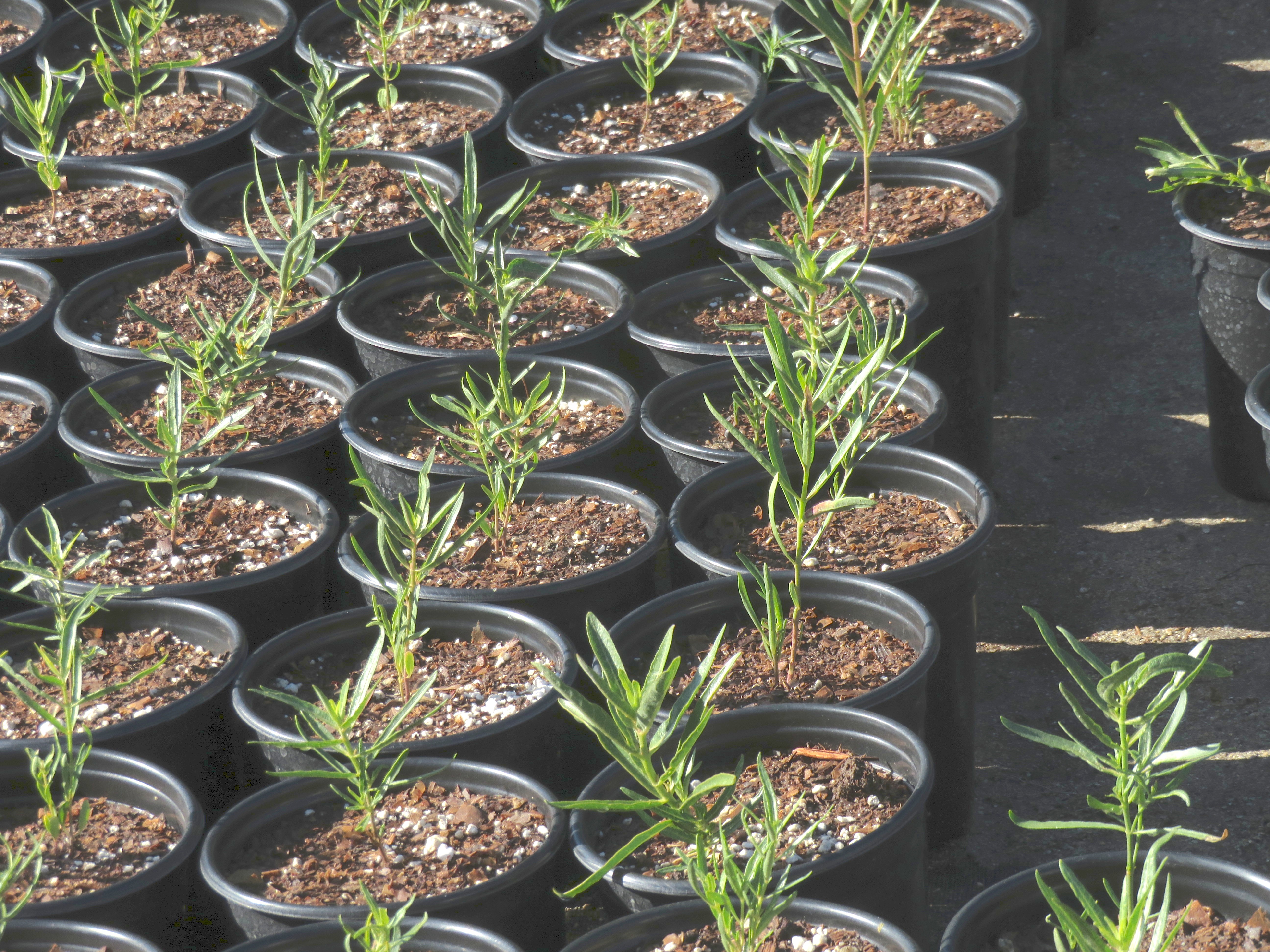
The 1-gallon pots waiting for your garden.
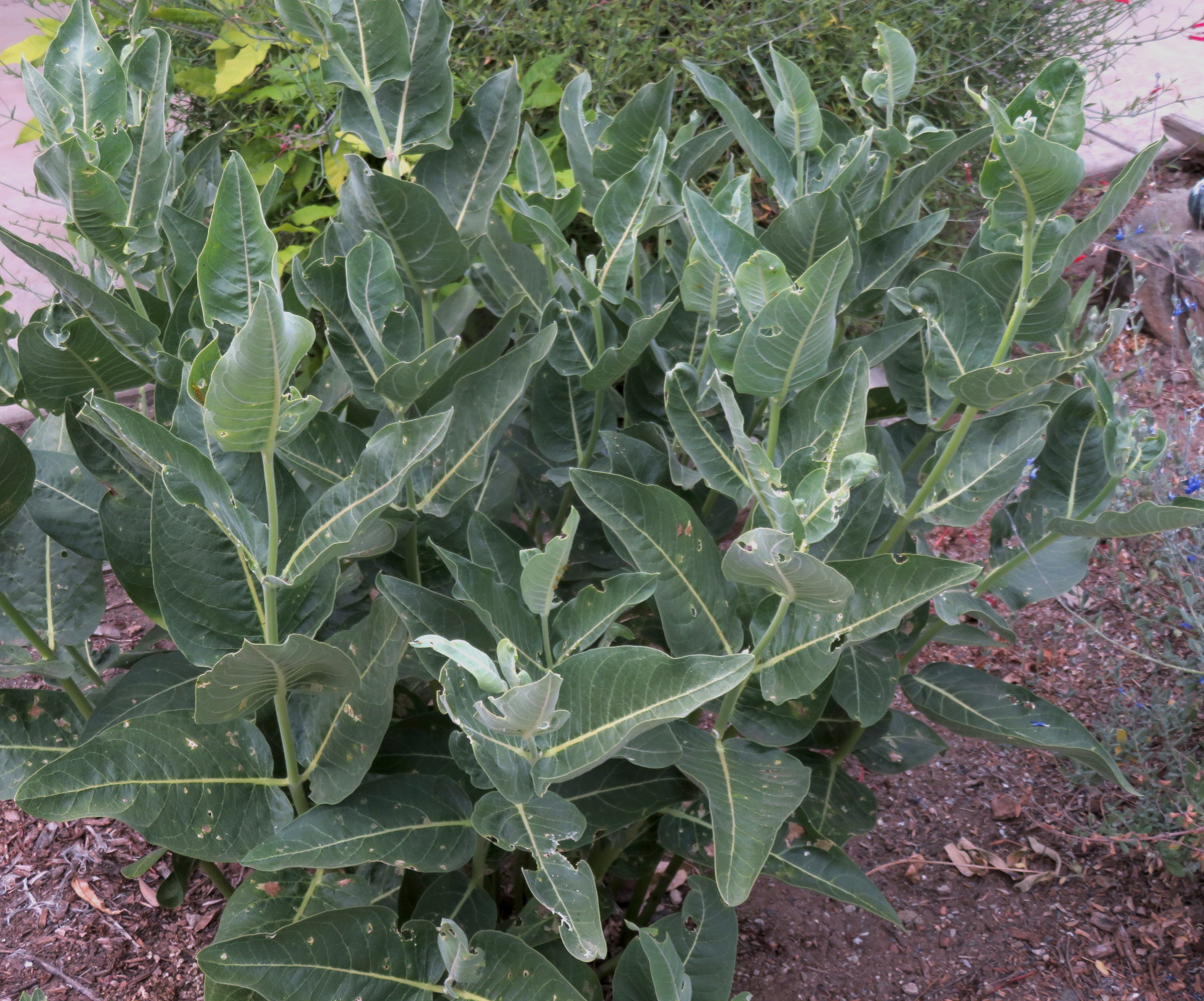
They get really big in spring after they’ve been in the garden a few years. The holes are from the “spring” caterpillars.
To bloom and to be “showy” they also need to be in the ground for a couple of year and they get beautiful fragrant flowers.
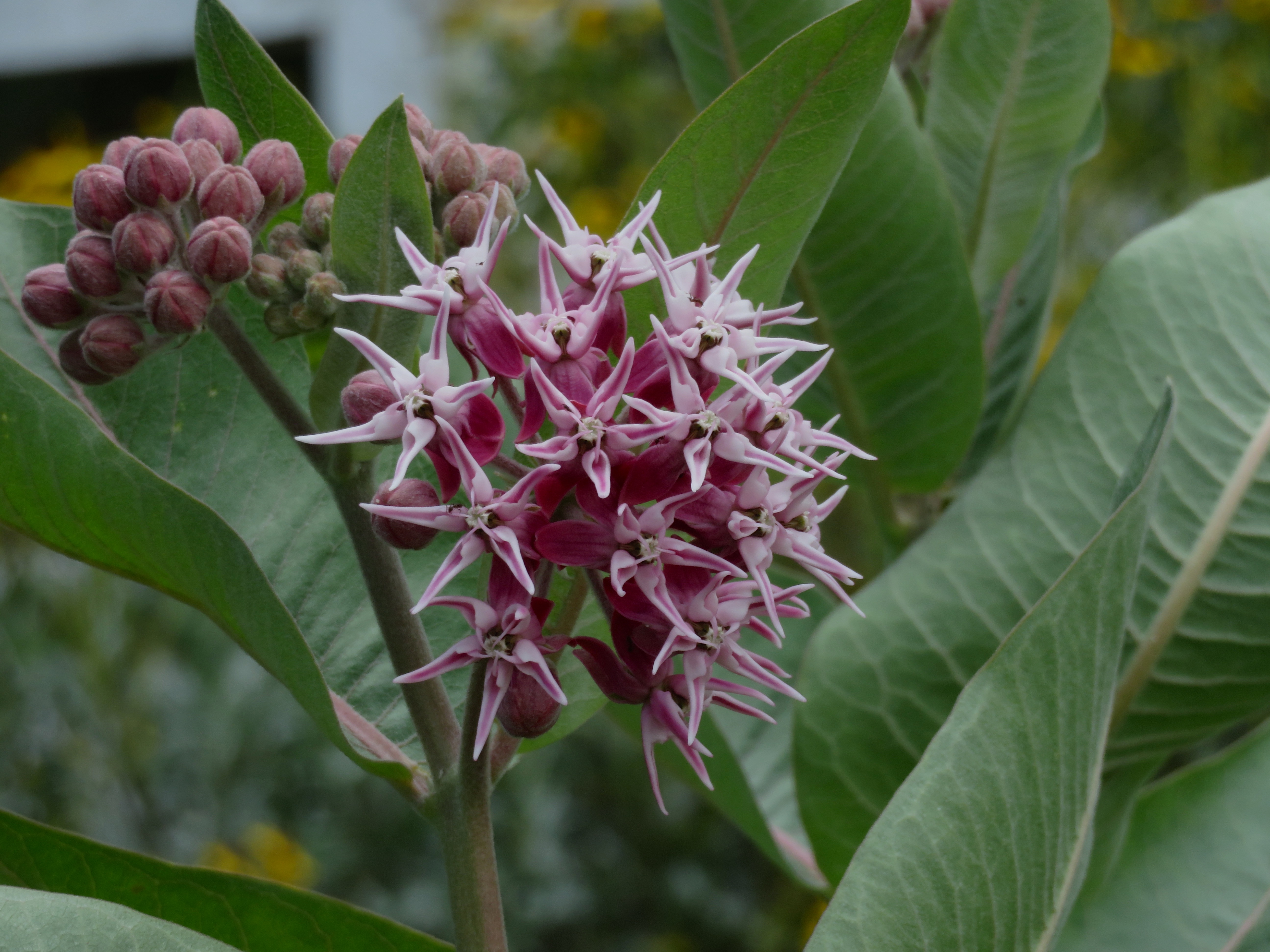
As the seasons turn to summer the flowers become seed pods and they plants begin to look a little stressed. This is just “normal” . In your garden you should be watering your showy milkweed between 1x and 2x/week. When it cools down in fall your milkweed will be off and running again. The plants in the nursery pots are much, much bigger.
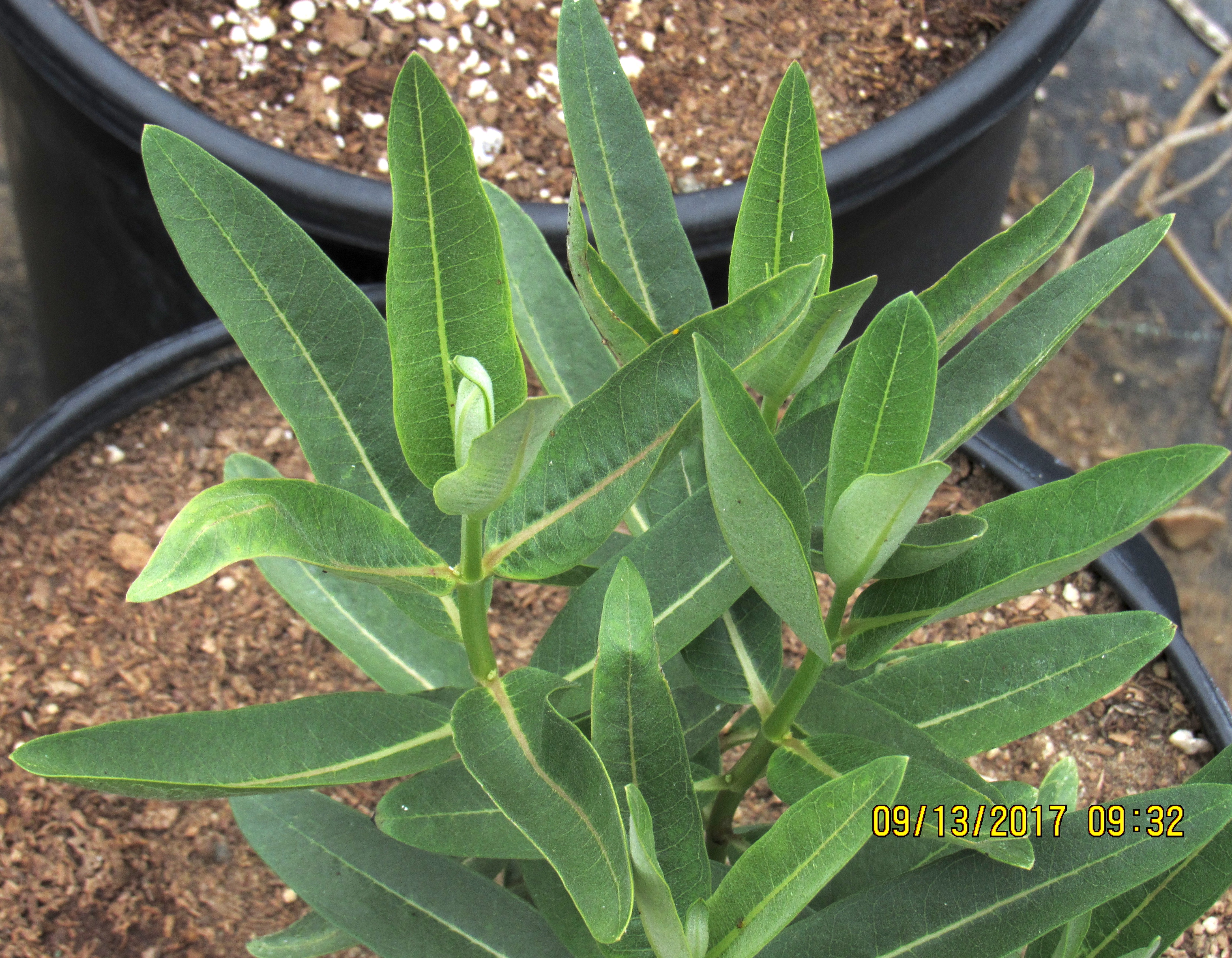 Had they been planted in the ground in spring they’d be much bigger still.
Had they been planted in the ground in spring they’d be much bigger still.
In fall in September the monarchs will come back to the milkweed in you garden and lay their eggs (and have successive generations- more on that later I guees). The eggs on you milkweed will hatch, the caterpillars will eat, the chrysalises will be formed, and the new monarchs will emerge.
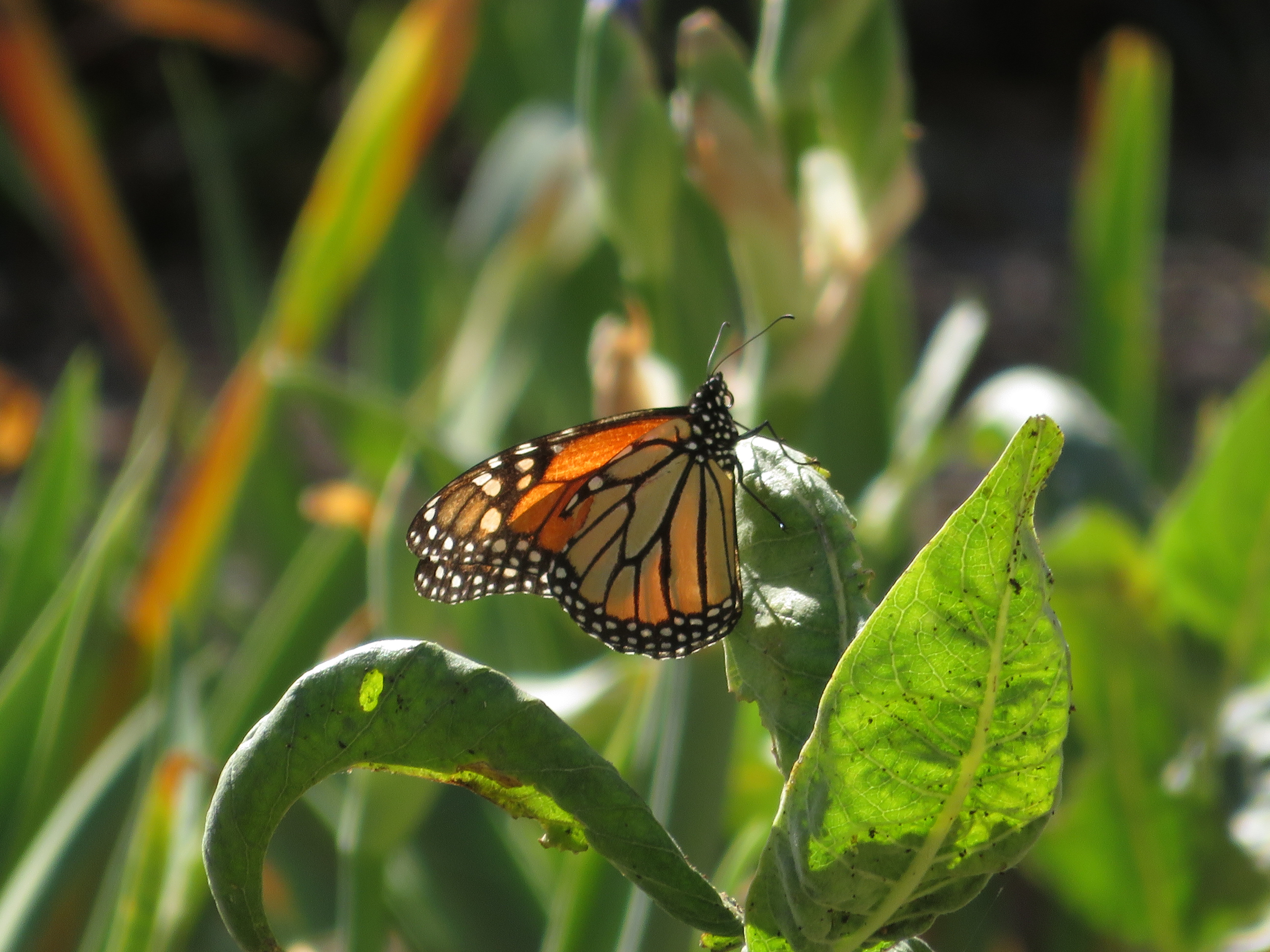
The monarchs back laying her eggs…next the caterpillars will eat and each and eat.
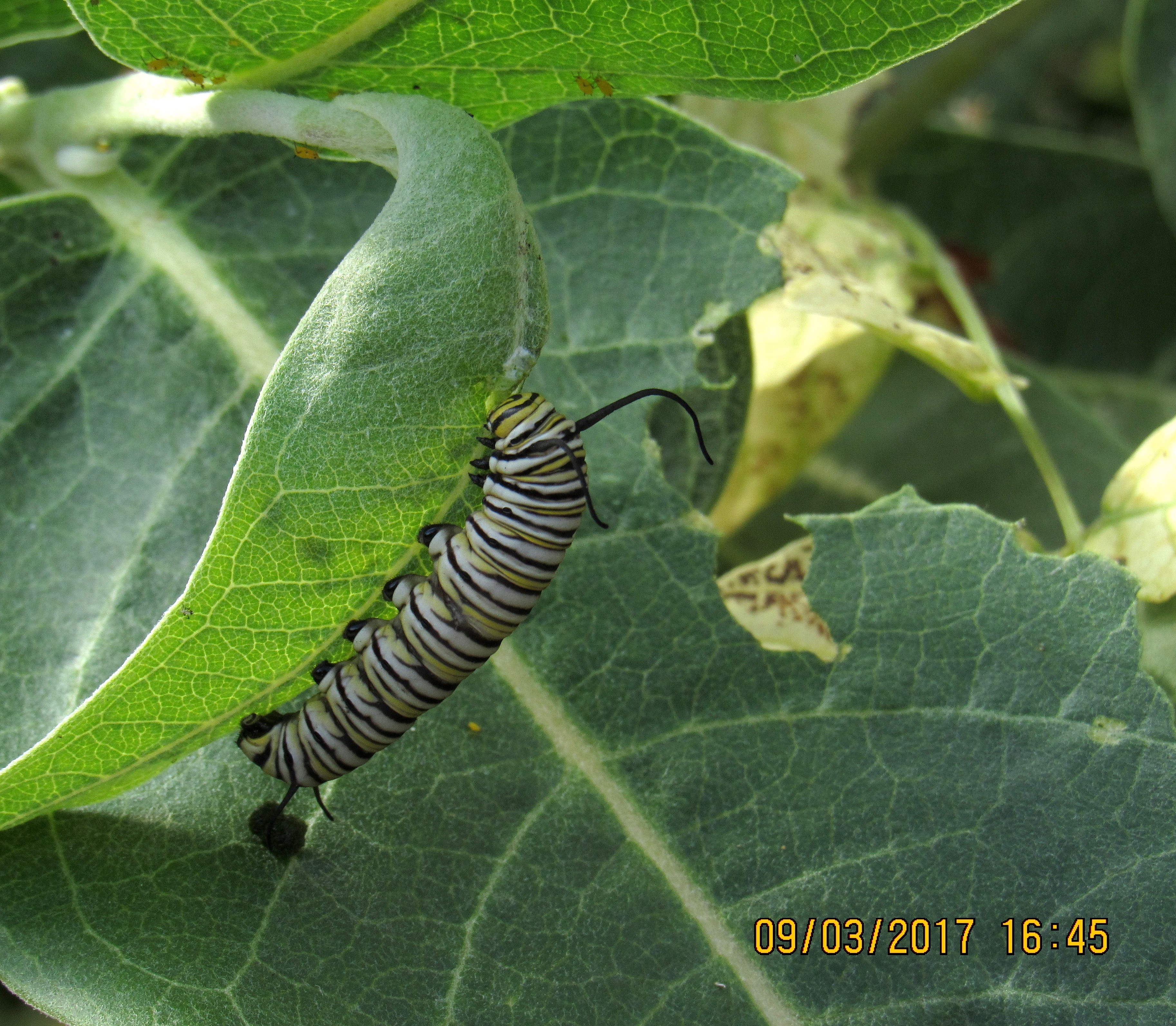
Below..out of control…
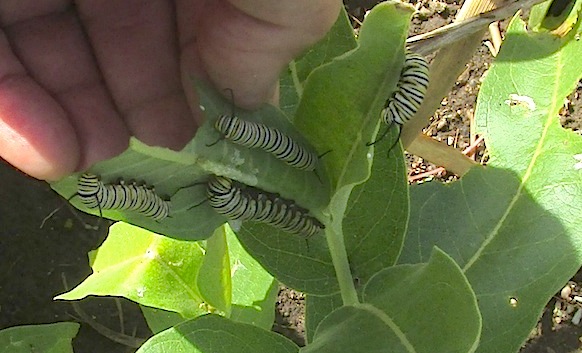
Next..when the caterpillars get really big after about two weeks they ready to crawl away and from a chrysalis. The chrysalises are all that easy to find so you might have to hunt around.
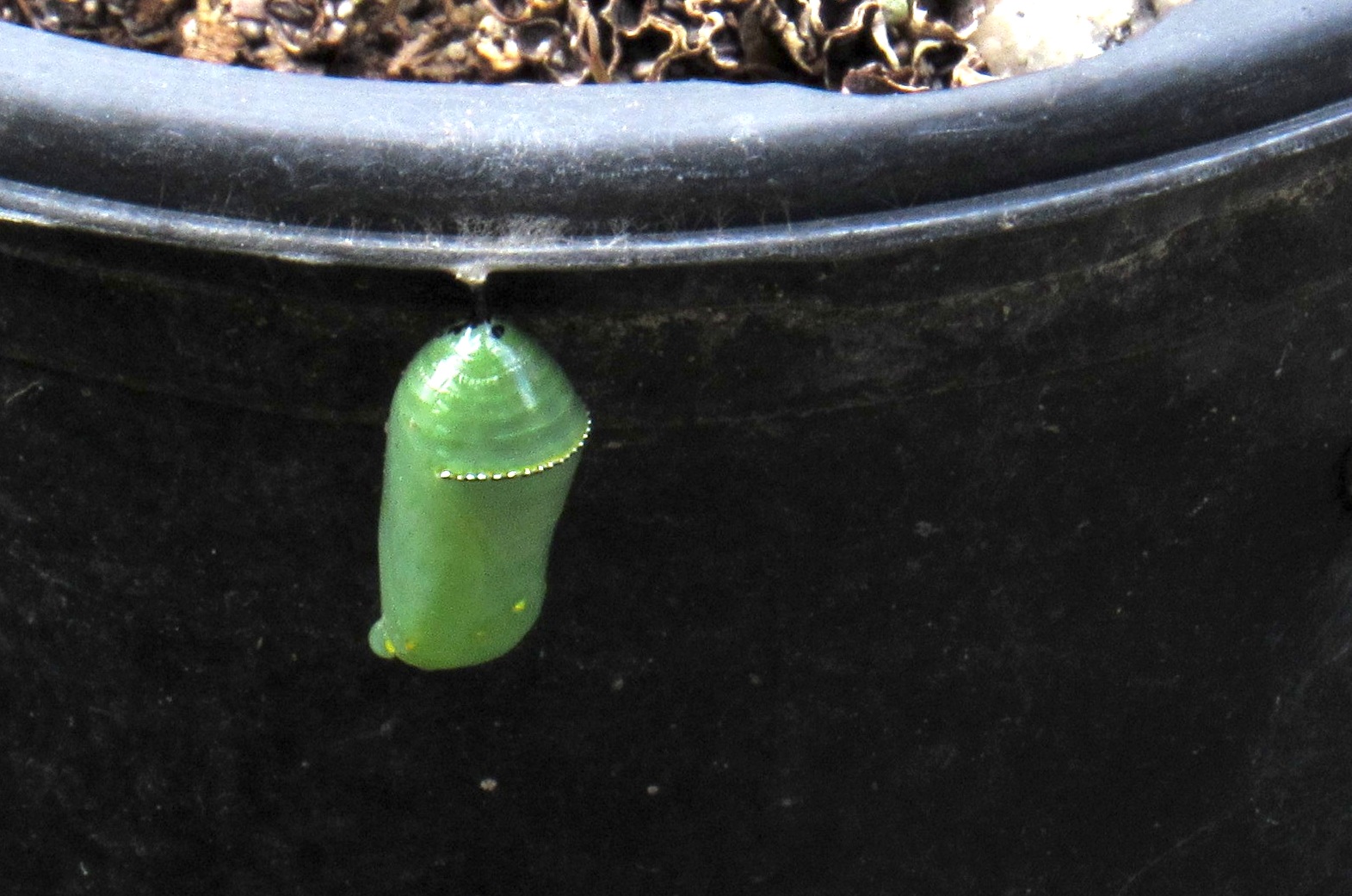
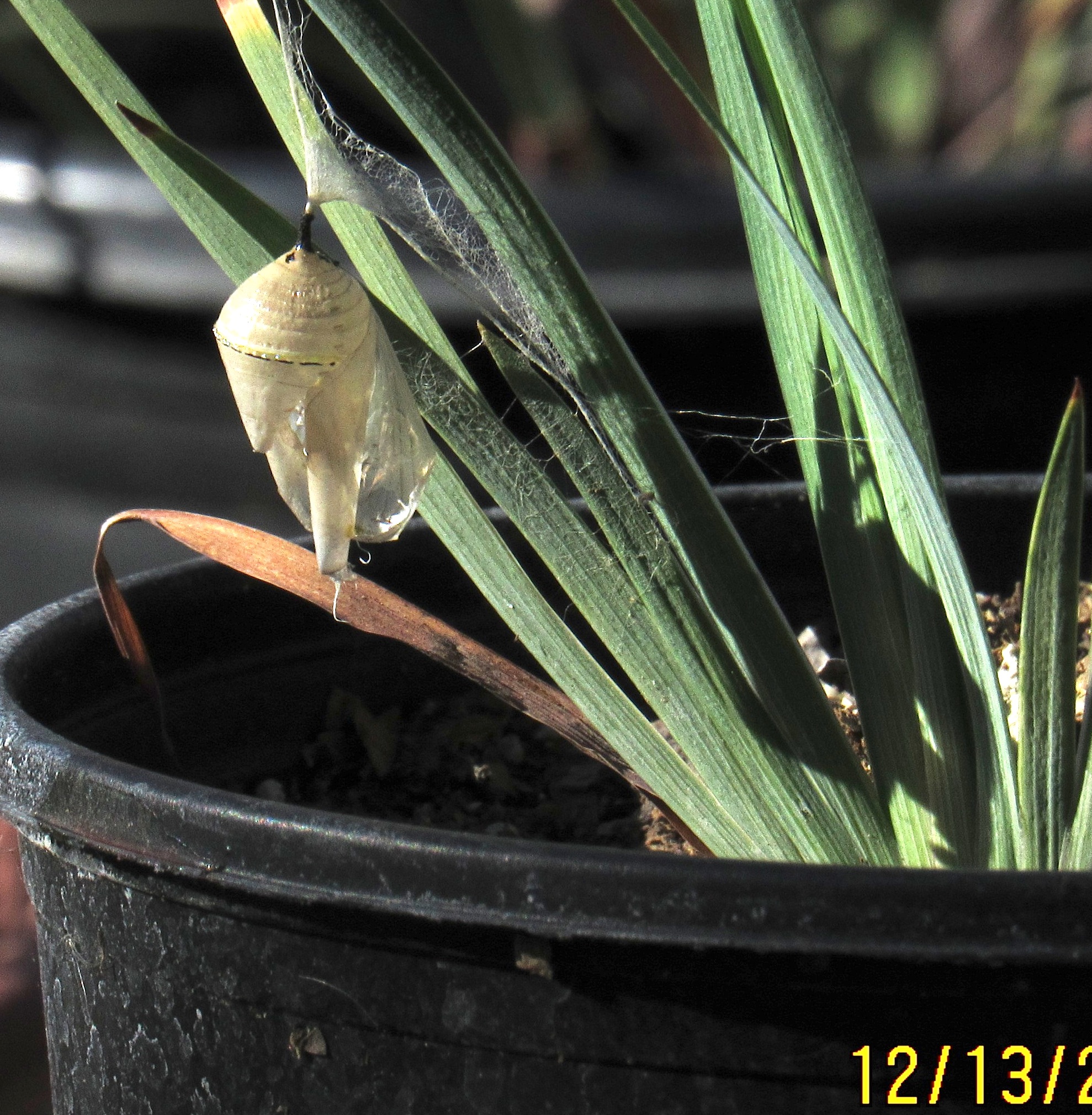
And in a couple more weeks they new monarch will emerge and fly away as they’ve always done.
And just like the movie “if you plant it they will come.”
